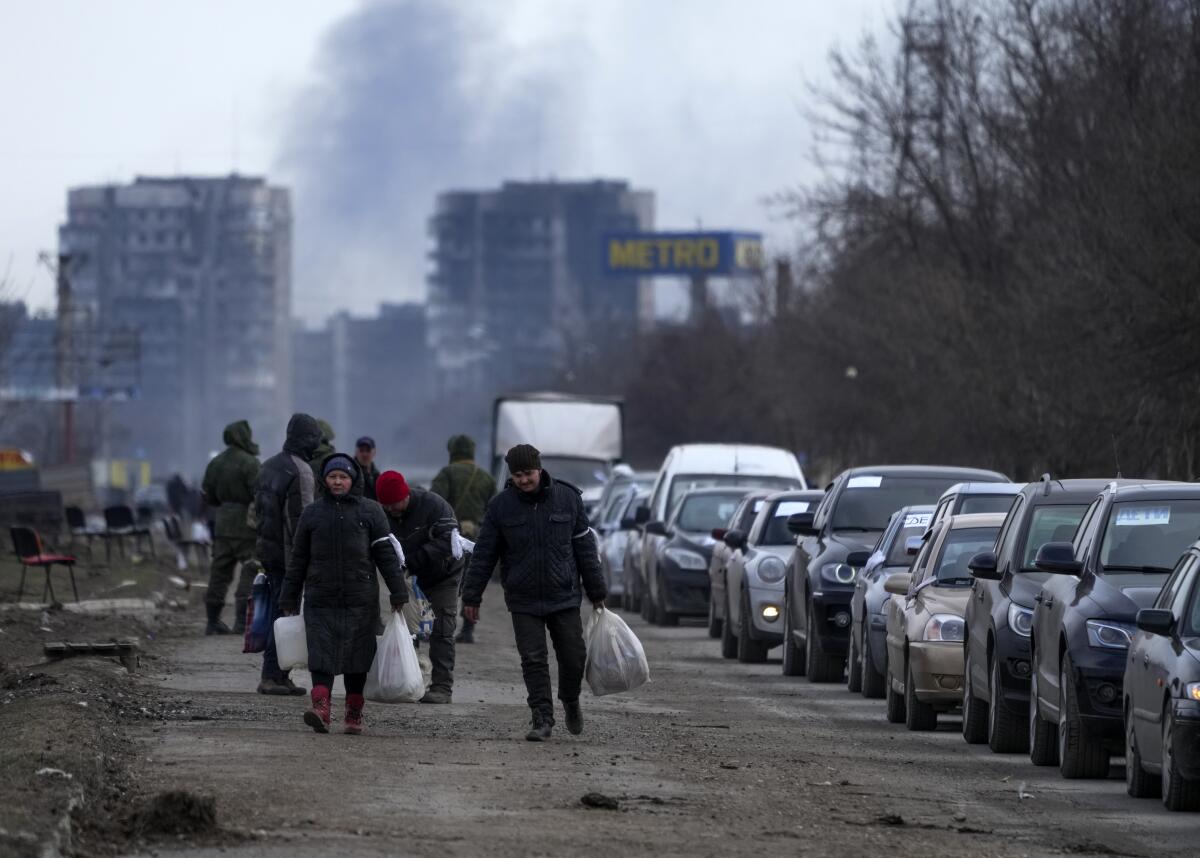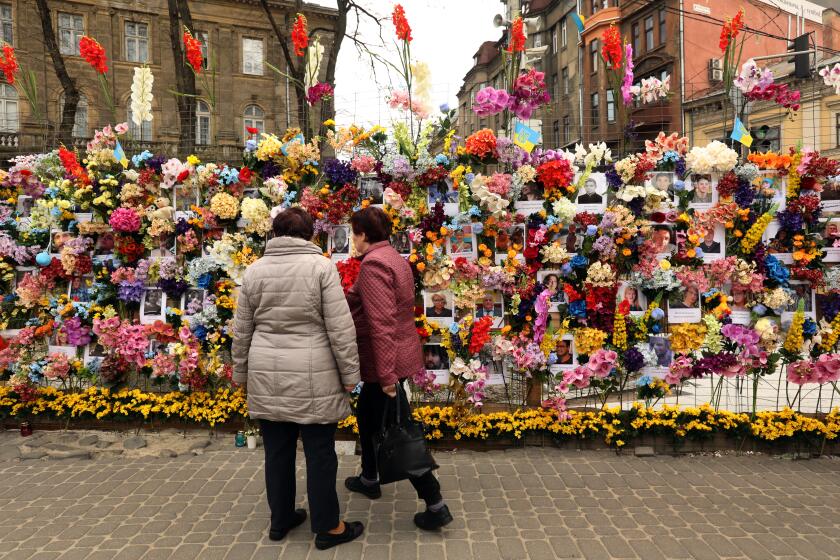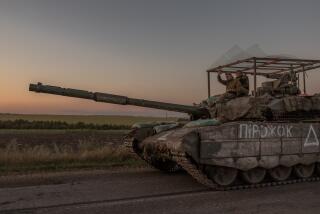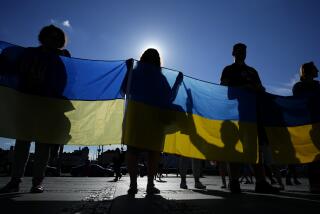Op-Ed: Why Russia likely won’t win the fight in Ukraine’s cities

- Share via
Russia’s main drive to capture Kyiv, Ukraine’s capital, has faltered. But its sieges of cities in the east continue apace, as millions either flee, are forced underground or are reportedly taken to Russia by force. Thousands of innocents are presumed dead. At this stage, the fighting in Ukraine’s urban areas is about to enter a new and potentially more lethal phase.
Although Ukraine is a traditionally agrarian society with some industry in its east, cities are its focal points and will decide the fate of the war. To win the war, Russia must still take Kyiv and raise the Russian flag over Maidan, the capital’s Independence Square. But to take the capital, it requires the conquest of several key nodes to gain control over critical chokepoints and shipping routes.
Here is where the war has gone — and probably will continue to go — wrong for Russia. Urban warfare is the most complex, hardest type of warfare for even the best-trained and equipped military in the world. Despite all the proclamations of its modernization and expertise, Russia has shown its shortcomings. Russian troops look more like the Soviet army that bumbled into Afghanistan in the 1980s than the force that took over Crimea in 2014. In Ukraine, the resistance is stiffer than in Crimea, but the inability of Russia to dominate the cyber, electronic warfare and information fronts also has been pivotal.
This Passover as we observe Ukrainians fleeing their homes to find safety from invaders, Putin comes off, well, pharaonic.
That spells doom for Russia’s forces as it enters the next phase of the war, which will require the penetration of Ukraine’s major cities. Urban warfare requires nimbleness, agility, sophisticated intelligence-gathering operations, doctrine to overcome the inherent challenges of the urban terrain, formations of artillery, tanks, infantry, engineers working in concert, disciplined rank-and-file, strict command and control with authority devolved down to junior officers in the field, and knowledge of local terrain. Russia has none of this.
Yet even the best-trained military in the world would struggle to conquer and control a country as large as Ukraine. And urban warfare reduces all the strengths of the attacker, even if it is a superior military force. The attackers lack situational awareness to see into dense terrain with full clarity. They are confined to narrow streets and alleys, and are prevented from spreading out to support each other.
Concrete obstacles and buildings provide the defense with protection and concealment. The attacking military must crisscross open areas and exposed streets to attack a defender behind walls of concrete. The attackers will have no clue where the enemy is amid the thousands of potential hiding spots. History is full of examples of small, prepared urban defenders striking potent blows to a superior attacking military — including Mogadishu, Somalia, in 1993; Grozny, the Chechen capital, in 1994; and Suez City, Egypt, in 1973.
Nor does Russia have sufficient forces — even if reinforced by Chechen or Syrian mercenaries — to control Ukraine’s cities. U.S. Army doctrine says that to hold urban terrain, a military needs three to five times the troops required in any other environment.
If defended well, a city can force a military to send five or more soldiers to attack just one urban defender. Yet Russia commands an estimated 280,000 soldiers in its active army in the war, while Ukraine fields an active force of around 126,000, though it has tens of thousands more in its volunteer militias called the territorial defense force. It’s simple arithmetic.
Photojournalist Carolyn Cole documents Ukrainian life amid Russia’s invasion.
But doctrine matters too. Russia discovered what many armies have learned from history: Bombing cities does not force their inhabitants to give up. It did not do so in the 1942 battle of Stalingrad, the 1945 battle of Berlin, or the 2003 U.S. invasion of Baghdad — ground forces must go in to clear and hold the city if it is to be taken.
The paradox of urban warfare is that the more you bomb a city, the harder it is to take. Bombed buildings are easier to defend if a defender survives the initial bombing because rubble of concrete and steel makes for nifty bomb-proof bunkers to fight from and perfect locations to hide improvised explosive devices.
Russia’s failure to quickly penetrate Kyiv and the other major Ukrainian cities allowed the Ukrainians to use the urban terrain to defend their cities. Ukrainian forces blew up bridges, blocked roads, attacked convoys from hidden ambushes and prepared the streets to be “meat grinders” that the Russians feared. No wonder desertions are high, troop morale is flagging and so many Russian commanding officers have reportedly been killed.
Make no mistake, Russia will regroup and retool its military strategy. It will rely less on precision and more on collective punishment. Expect more war crimes and horrific images from the front lines. Sun Tzu famously noted in “The Art of War” that the best warfare strategy is to attack the enemy’s plans, next is to attack alliances, next is to attack the army, and the worst is to attack a walled city. Even though cities like Mariupol may look like post-apocalyptic hellscapes, they are the worst places for an invading army to target.
That is the only piece of good news going for Ukraine.
John Spencer is a retired U.S. Army major and chair of urban warfare at the Madison Policy Forum and author of the forthcoming book “Connected Soldiers.” Lionel Beehner is a former International Affairs Fellow at the Council on Foreign Relations and currently a director at ReD Associates. Liam Collins is a retired U.S. Army colonel, senior fellow at New America and co-author of the forthcoming book “Understanding Urban Warfare.”
More to Read
A cure for the common opinion
Get thought-provoking perspectives with our weekly newsletter.
You may occasionally receive promotional content from the Los Angeles Times.












